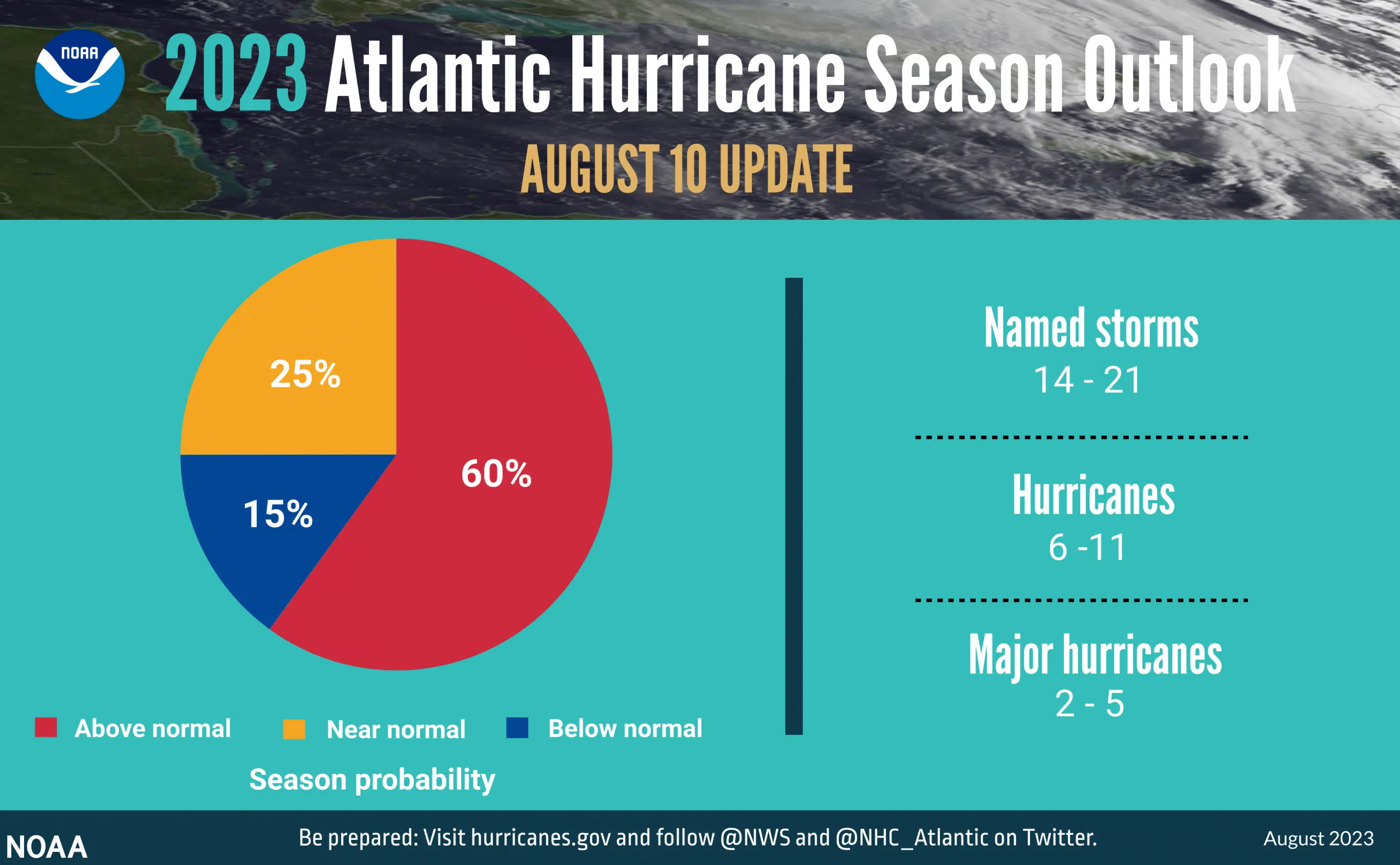Forecasters are anticipating a much busier Atlantic hurricane season than first expected earlier this year.
The U.S. National Oceanic and Atmospheric Administration (NOAA) released its updated forecast on Thursday.
“Atmospheric and oceanic conditions now slightly favour an above-normal hurricane season,” Matthew Rosencrans, lead hurricane season forecaster, said during a news conference.
Forecasters have increased the likelihood of an above-normal season to 60 per cent from 30 per cent in May. The likelihood of near-normal activity has decreased to 25 per cent from 40 per cent three months ago.
NOAA is now predicting 14 to 21 named storms, of which six to 11 could become hurricanes. Of those, two to five could become major hurricanes of category three or higher.
When the forecast was first released in May, the agency forecasted 12 to 17 named storms, five to nine hurricanes and one to three major hurricanes.
An average hurricane season produces 14 named storms, of which seven become hurricanes, including three major hurricanes.
“The main climate factors expected to influence the 2023 Atlantic hurricane activity are the ongoing El Nino and the warm phase of the Atlantic Multi-Decadal Oscillation, including record-warm Atlantic sea surface temperatures,” said Rosencarns.
El Nino conditions usually help to reduce tropical activity during the Atlantic hurricane season by creating significant wind shear over the Atlantic.
But those limiting conditions have been slow to develop, said Rosencarns, and may not be in place for much of the remaining hurricane season.
Even if those conditions do develop in time, Rosencarns said say record-warm Atlantic sea surface temperatures will likely counterbalance the impacts.
“The June-July sea surface temperatures in the main development region in the North Atlantic were the warmest since 1950,” he said.
Higher temperatures in the tropical Atlantic Ocean and Caribbean Sea can create more energy to fuel storm development.
Rosencarns said those higher temperatures have already contributed to an active start to this year’s hurricane season. Five storms have reached at least tropical storm strength, including one hurricane already.
The hurricane season officially runs from June 1 to November 30, with the bulk of the tropical cyclone activity usually occurring from August through October.




